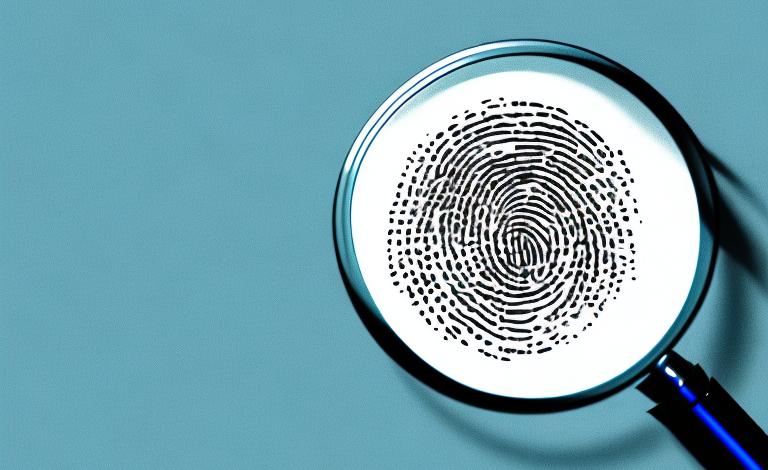Fingerprints are unique patterns that are formed by ridges and valleys on the tips of our fingers. Scientists have been studying fingerprints for over a century and we have come a long way in understanding the complexity of this unique identifier. Apart from being used for identification, fingerprint analysis has various applications in forensic science as well.
The Anatomy of a Fingerprint: Exploring the Layers of Skin Involved
Fingerprints are formed by the epidermis (the outer layer of skin) and the dermis (the second layer of skin) of our fingertips. The epidermis is made up of layers of dead skin cells, while the dermis contains living skin cells, sweat glands, hair follicles, and blood vessels. It is the dermal papillae, which are the raised areas on the dermis that form the unique pattern of ridges and valleys that we see on our fingertips.
Interestingly, fingerprints are not only unique to each individual, but they can also change over time. Factors such as age, injury, and certain medical conditions can alter the pattern of ridges and valleys on our fingertips. This is why fingerprints are such a valuable tool in forensic science, as they can be used to identify a person even if their appearance has changed.
The Science Behind Fingerprint Formation: Understanding the Role of Genetics and Environment
Fingerprints are unique to each individual, with no two sets of prints ever being identical. The formation of fingerprints is determined by both genetic and environmental factors. While genetics plays a vital role in determining the pattern of ridges and valleys, environmental factors such as pressure on the developing fetus in the womb, friction on the fingers while touching objects, and aging also impact the formation of fingerprints.
Research has shown that identical twins, who share the same genetic makeup, do not have identical fingerprints. This suggests that environmental factors play a significant role in the formation of fingerprints. In fact, studies have found that fingerprints can even change over time due to environmental factors such as injury or disease.
Despite the uniqueness of fingerprints, there are three main types of patterns that can be identified: arches, loops, and whorls. Arches are the simplest pattern, with ridges that enter from one side of the finger and exit from the other side. Loops have ridges that enter from one side of the finger and curve around to exit from the same side. Whorls have ridges that form circular or spiral patterns.
Can You Alter Your Fingerprints? Debunking Myths About Changing Fingerprints
There have been myths that claim that it is possible to alter or erase fingerprints. But is this really true? The answer is a resounding no. While it is possible to temporarily change fingerprints by damaging or scarring the skin on your fingertips, the ridges will eventually grow back in the same unique pattern as before. Fingerprints are an unchangeable part of our identity.
Despite the fact that fingerprints cannot be altered, there are still some people who attempt to do so. In some cases, individuals may try to burn or cut off their fingerprints in order to avoid being identified by law enforcement. However, this is not a foolproof plan, as other identifying features such as facial recognition or DNA can still be used to identify a person.
It is also important to note that while fingerprints are unique to each individual, they can sometimes be difficult to read or match due to factors such as age, injury, or certain medical conditions. In these cases, forensic experts may need to use additional methods such as chemical treatments or specialized lighting to obtain a clear print.
The Use of Fingerprint Analysis in Criminal Investigations: A Historical Perspective
Fingerprints have been used in criminal investigations for over a century. In the early 1900s, police departments began to collect fingerprints as a means of identifying criminals. The FBI’s Automated Fingerprint Identification System (AFIS) was developed in the 1990s, making it easier for law enforcement agencies to match fingerprints found at crime scenes to those in their database.
Since the development of AFIS, fingerprint analysis has become an even more important tool in criminal investigations. Not only can fingerprints be used to identify suspects, but they can also be used to link suspects to specific crime scenes. In addition, advancements in technology have allowed for the analysis of partial fingerprints, which can still provide valuable evidence in a case. Despite some criticisms of the reliability of fingerprint analysis, it remains a widely accepted and utilized method in criminal investigations.
The Accuracy and Limitations of Fingerprint Identification Technology
While fingerprint analysis is a useful tool in criminal investigations, it is not foolproof. The accuracy of fingerprint identification can be impacted by a number of factors, such as the quality of the print, the training and expertise of the analyst, and the presence of similar patterns in the population. There have been instances of wrongful convictions based on faulty fingerprint analysis. Therefore, it is important to be aware of the limitations of this technology.
Despite its limitations, fingerprint identification technology has come a long way in recent years. Advances in technology have made it possible to identify fingerprints on a wider range of surfaces, including fabrics and plastics. Additionally, new software has been developed to help analysts compare and match fingerprints more accurately. However, it is important to remember that even with these advancements, fingerprint analysis should always be used in conjunction with other forms of evidence to ensure the most accurate results.
The Future of Fingerprint Analysis: Advancements in Biometric Technology
Advancements in technology have brought about new developments in fingerprint analysis. Biometric technology is one such development that uses fingerprints to verify identity. These systems use complex algorithms to match fingerprints electronically, making it faster and more accurate than traditional methods. This technology has various applications in fields such as security, banking, and healthcare.
One of the major advantages of biometric technology is its ability to prevent identity theft. With traditional methods, such as passwords or PINs, there is always a risk of someone stealing or guessing the code. However, with biometric technology, the user’s unique fingerprint is required for access, making it nearly impossible for someone to steal or replicate.
Another area where biometric technology is being used is in the field of law enforcement. Police departments are using fingerprint analysis to solve crimes and identify suspects. With the help of biometric technology, investigators can quickly match fingerprints found at a crime scene to those in a database, leading to faster and more accurate identification of suspects.
Fingerprinting in Forensic Science: A Comprehensive Guide to Collection and Preservation Techniques
Collecting and preserving fingerprints is an integral part of forensic investigation. There are several techniques used to collect fingerprints, such as using fingerprint powders, lifting tape, or cyanoacrylate fuming. Preservation techniques such as storing prints on a database, or photographing and documenting prints for future reference have also been developed.
One of the challenges in fingerprint collection is dealing with contaminated or damaged prints. In such cases, forensic experts may use advanced techniques such as laser ablation or chemical enhancement to reveal the hidden details of the print. These techniques require specialized equipment and expertise, but can provide valuable evidence in solving a case.
Another important aspect of fingerprint analysis is the interpretation of the collected prints. Forensic experts use a variety of methods to compare and match prints, including automated fingerprint identification systems (AFIS) and manual comparison by trained analysts. The accuracy of these methods depends on several factors, such as the quality of the print, the complexity of the pattern, and the experience of the analyst.
Understanding the Legal Implications of Fingerprint Identification Evidence in Court Cases
Fingerprint identification evidence has been used in court cases for decades. However, it is critical to understand the legal implications of such evidence. It is important to establish the methods used to collect and analyze the prints and to ensure the reliability of the methods utilized. Moreover, the analyst’s expertise, the quality and clarity of the prints, and the absence of potential contamination must all be considered.
Recent studies have shown that there is a possibility of error in fingerprint identification evidence. In some cases, the prints may be too distorted or incomplete to make a positive identification. Additionally, there have been instances where analysts have made mistakes in their analysis, leading to wrongful convictions. It is important for judges and juries to be aware of these potential errors and to carefully consider all evidence presented in court.
Medical Conditions that Affect Fingerprints: What You Need to Know
Medical conditions such as eczema, psoriasis, and vitiligo can impact the clarity and quality of fingerprints. Certain diseases and medications can cause pattern destruction or ridges that appear to have melted or dissolved. In rare cases, individuals may have no fingerprints at all. It is crucial for forensic examiners to be aware of these medical conditions so as not to mistake them for intentional alteration of the prints.
In conclusion, fingerprints are a fascinating aspect of human biology and have wide applications in many fields. Understanding how they are formed, their uniqueness, and their benefits and limitations as an identification technology is vitally important.
Another medical condition that can affect fingerprints is scleroderma, a disease that causes hardening and tightening of the skin. This can lead to distorted fingerprints or even the loss of fingerprints altogether. Additionally, chemotherapy and radiation treatments for cancer can also impact the clarity and quality of fingerprints, as they can cause skin damage and scarring.
It is important to note that while medical conditions can affect fingerprints, they do not necessarily make them unusable for identification purposes. Forensic examiners can still use other identifying features, such as the shape and size of the fingers, to make a positive identification. However, it is crucial for examiners to be aware of these conditions and to take them into consideration when analyzing fingerprints.



